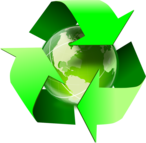CREDENTIAL CLOTHING IS HIGH QUALITY USED CLOTHING
When a charitable institution receives a clothing donation, the bags are opened and items are sorted according to item type (shoes, children’s/women’s/men’s clothing, bric-a-brac, linens, etc) and graded according to quality. Clothing and other items that are clean and in good condition are priced and sent to the storefront for resale. Clothing that is damaged or excessively worn is sent to a warehouse where it is baled and eventually sold as a category of used clothing called mixed rags.
Sometimes, however, thrift stores and charitable institutions are unable to process every donation due to the high volume of donations they receive. These unprocessed donations are also sent to a warehouse where they are baled with similarly-unprocessed donations and eventually sold as a category of used clothing called credential clothing.
Credential clothing is also occasionally referred to as an "original" donation since it is left in the same condition in which it was received at the drop box, charity, or thrift store. It may include a mix of men’s, women’s and children’s apparel as well as shoes, purses, belts, and accessories.
Other types of used clothing are graded based on their quality. Credential used clothing, however, is always ungraded; it is always untouched, unsorted, and kept in its original bags. The value of credential clothing comes from it being untouched by graders. It is higher quality than mixed rags and other used clothing sorts that have been touched and sorted. This is because items such as newer clothes, designer brand clothing, pairs of shoes, accessories such as purses, wallets, and backpacks, as well as high-value vintage items have not been sorted out and sold separately.
Each year an average of 5 billion pounds of clothing, SHOES, AND TEXTILES ARE donated to THRIFT STORES AND charitable institutions in the u.s.A.
AND ALTHOUGH THE RESALE MARKET IN THE U.S. IS STRONG, THE SUPPLY OF DONATED CLOTHING is FAR greater than THE DEMAND. rather than send excess donations to the landfill, they are baled and sold as credential clothing.

95% of donated textiles are either resold as secondhand clothing or are recycled into other products such as home insulation and upholstery padding.
The resale, reuse, and/or recycling of unwanted textiles is good for the environment because it reduces energy consumption and carbon dioxide emissions, helps conserve natural resources, and keeps usable items out of landfills.


THE GLOBAL DEMAND FOR CREDENTIAL CLOTHING
The purchase and distribution of credential clothing is an integral part of the global used clothing trade. 5.6 billion people around the world purchase and wear used clothing; 80% of the world’s population. There is a substantial worldwide demand for quality used clothing and shoes, especially in developing nations that don’t have a textile industry of their own. Credential used clothing is the answer to that demand because it is high quality used clothing which can be sold at a fraction of its original cost, making it very affordable to consumers.
The resale of used clothing (whether for apparel or recycling purposes) is a vital part of every economy and every effort should be made to encourage people to donate rather than throw away used clothes and shoes.

We provide quality at affordable prices worldwide
CREDENTIAL USED CLOTHING IS GOOD FOR THE ENVIRONMENT
The reuse of used clothing is pivotal to creating sustainability in the textile industry. As demand for textiles has increased, so has supply. New clothing is being manufactured and consumed more rapidly than ever before. This has caused an increase in the number of used clothing and textile items being donated and discarded. The ultimate goal (from a sustainability standpoint) is to reuse as close to 100% of textiles as possible, thereby preserving virgin resources.

